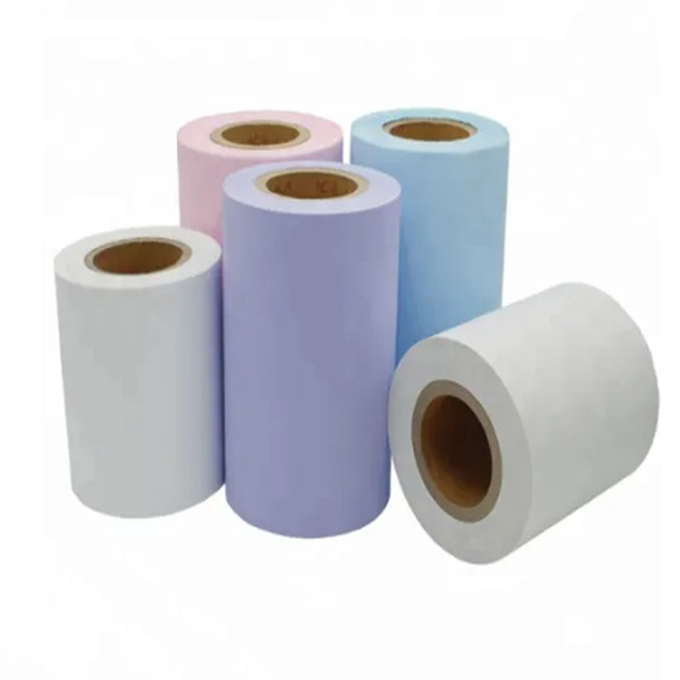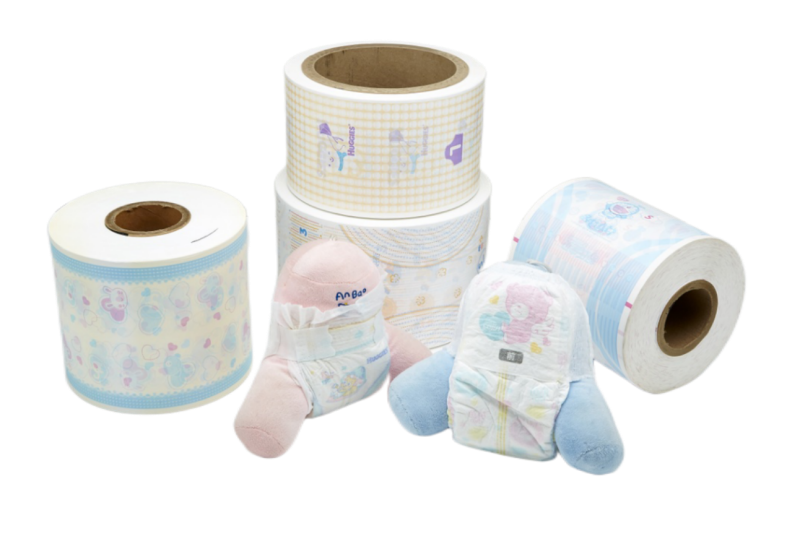What Are PE Films and Why Are They Used in Hygiene Products?
POSTED ON 23/06/2023 BY ERIC

Overview
Polyethylene (PE) films are thin, flexible plastic sheets made from polyethylene polymers. They are manufactured through an extrusion process where polyethylene resin is melted and formed into thin sheets. They’re used as the backsheet or outer layer of disposable hygiene products like diapers, female sanitary napkins, and incontinence pads because of their waterproof properties. Their main purpose is to act as a liquid barrier, containing fluids and preventing leakage.
Why Are They Used in Hygiene Products?
PE films are used due to their key properties:
1. Waterproof Barrier: They prevent moisture from leaking, keeping users dry and comfortable.
2. Flexibility and Softness: This ensures the products conform to the body, reducing irritation.
3. Breathability: Breathable PE films allow moisture vapor to escape, reducing the risk of rashes, particularly in diapers.
Types of PE Films Used in Hygiene Products
•Non-Breathable PE Films
Non-breathable PE films are designed to be fully waterproof, making them an essential component in hygiene products where leakage prevention is the top priority. They are typically used as backsheets in sanitary napkins and diapers, ensuring a barrier against leaks.
One key advantage of non-breathable PE films is their cost-effectiveness. They provide a strong barrier at a relatively low production cost, which is critical for manufacturers aiming to keep hygiene products affordable. Additionally, non-breathable films can be made soft and flexible, ensuring they don’t compromise the overall comfort of the product.
•Breathable PE Films
Engineered with micropores (0.01-10 microns), these films allow water vapor to diffuse outward while blocking liquid water, enhancing comfort by reducing moisture buildup. This is crucial for products worn for extended periods, such as diapers, where skin health is a concern. The manufacturing process involves adding calcium carbonate (CaCO3) and stretching the film to create these pores.
Breathable PE films are particularly popular in premium hygiene products, such as high-end diapers and sanitary napkins. The ability to maintain a dry, comfortable environment next to the skin enhances the user experience, making these films a favorite among consumers who value quality. From a manufacturing perspective, breathable films can be tailored to specific levels of air permeability, offering flexibility to meet diverse product requirements.
•Breathable Printed PE Films
These combine the benefits of breathability with printed designs, such as wetness indicators or branding. They are used in premium diapers and hygiene products, offering both functionality (e.g., color-changing lines to signal wetness) and aesthetics, appealing to consumer preferences . The printing process doesn’t compromise the film’s breathability or waterproofing, thanks to advanced manufacturing techniques. For manufacturers, breathable printed films offer a way to elevate product aesthetics without adding significant costs to production.

The Manufacturing Process of PE Films for Hygiene Applications
Creating PE films for hygiene products is a precise, high-tech process. Here’s a step-by-step look:
1. Resin Selection: It starts with choosing the right polyethylene resin—low-density (LDPE) for flexibility or high-density (HDPE) for strength, depending on the film type.
2. Extrusion: The resin is melted and extruded through a die, forming a thin, continuous sheet. For breathable films, additives like calcium carbonate are included to create micropores.
3. Stretching: Breathable films are stretched to open up micropores, enhancing vapor transmission without compromising the liquid barrier.
4. Printing: For printed films, designs or indicators are added using skin-safe inks via advanced printing techniques.
5. Quality Control: Every batch undergoes strict testing—waterproofing, breathability, tensile strength—to meet hygiene industry standards.
6. Slitting & Packaging: The film is cut to size, rolled, and packaged for delivery to manufacturers.
Applications of PE Films in the Hygiene Industry
The versatility of PE films shines through in their wide range of applications within the hygiene industry. Let’s explore some of the most common uses:
Baby Diapers: PE films form the waterproof backsheet that keeps moisture locked inside the diaper, protecting clothing and bedding.
Feminine Hygiene Products: In sanitary napkins and panty liners, PE films provide a leak-proof layer that ensures convenience.
Adult Incontinence Products: For adult diapers, PE films offer durability and comfort, catering to the needs of users with limited mobility.
Medical UnderPads: Used in hospitals and care facilities, PE films create a protective barrier between patients and surfaces, maintaining hygiene and preventing dirt.
Each application demonstrates how PE films adapt to the specific demands of hygiene products, proving their value as a foundational material in the industry.
Want to learn more about our cutting-edge PE films for hygiene products? Contact us today to explore how we can support your manufacturing needs with sustainable, high-performance solutions.

ERIC
Expert specializing in hygiene raw materials solutions for all your hygiene, and industrial needs, including baby diapers, adult diapers, sanitary napkins, underpads etc.
Leave a Reply
Write to Us
